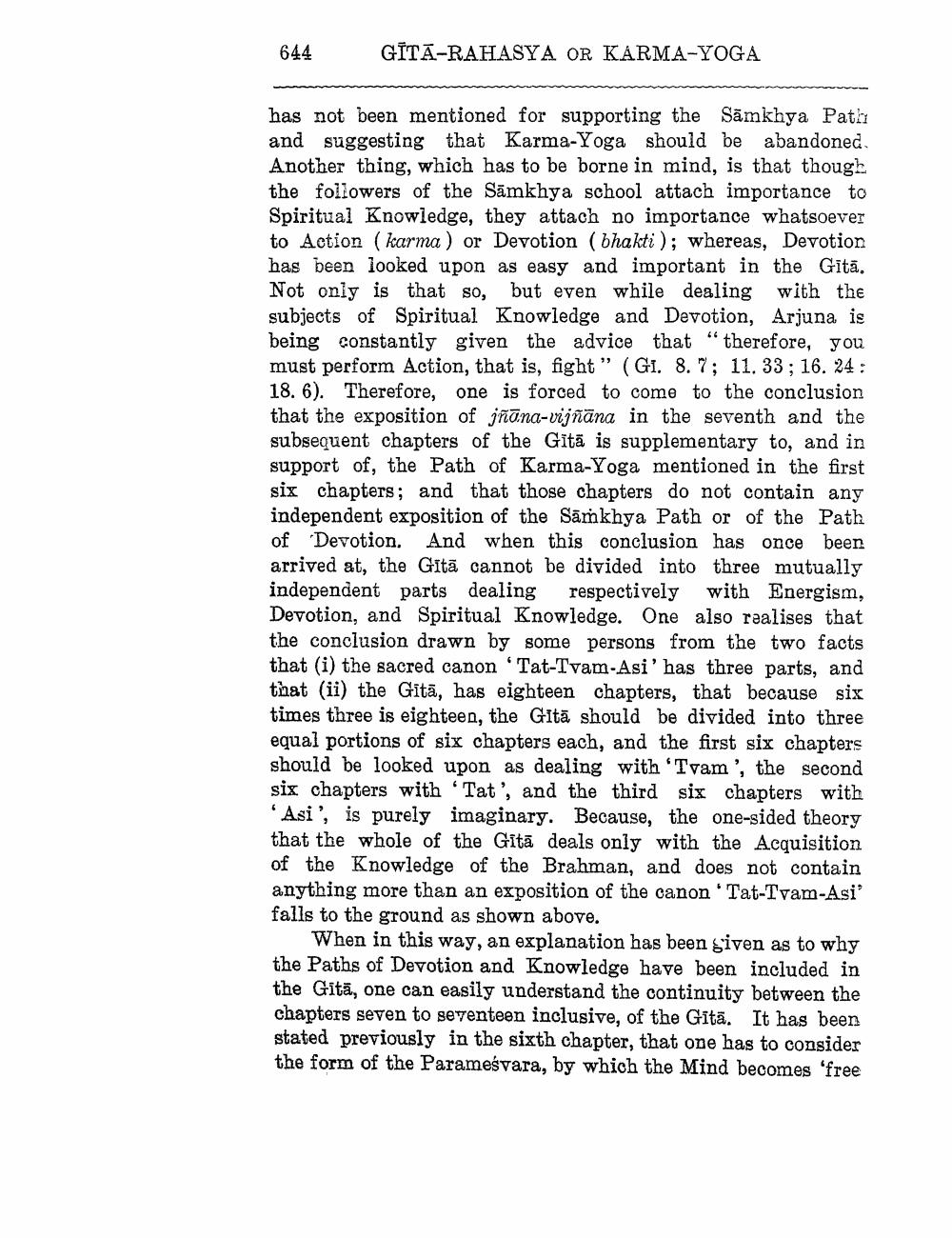________________
644
GĪTĀ-RAHASYA OR KARMA-YOGA
has not been mentioned for supporting the Sāmkhya Path and suggesting that Karma-Yoga should be abandoned. Another thing, which has to be borne in mind, is that though the followers of the Sāmkhya school attach importance to Spiritual Knowledge, they attach no importance whatsoever to Action ( karma ) or Devotion (bhakti); whereas, Devotion has been looked upon as easy and important in the Gītā. Not only is that so, but even while dealing with the subjects of Spiritual Knowledge and Devotion, Arjuna is being constantly given the advice that "therefore, you must perform Action, that is, fight" (GI. 8.7; 11.33; 16. 24: 18.6). Therefore, one is forced to come to the conclusion that the exposition of jñāna-vijñāna in the seventh and the subsequent chapters of the Gītā is supplementary to, and in support of, the Path of Karma-Yoga mentioned in the first six chapters; and that those chapters do not contain any independent exposition of the Sāmkhya Path or of the Path of Devotion. And when this conclusion has once been arrived at, the Gitā cannot be divided into three mutually independent parts dealing respectively with Energism, Devotion, and Spiritual Knowledge. One also realises that the conclusion drawn by some persons from the two facts that (i) the sacred canon Tat-Tvam-Asi' has three parts, and tìat (ii) the Gītā, has eighteen chapters, that because six times three is eighteen, the Gitā should be divided into three equal portions of six chapters each, and the first six chapters should be looked upon as dealing with 'Tvam', the second six chapters with Tat', and the third six chapters with 'Asi', is purely imaginary. Because, the one-sided theory that the whole of the Gītā deals only with the Acquisition of the Knowledge of the Brahman, and does not contain anything more than an exposition of the canon Tat-Tvam-Asi' falls to the ground as shown above.
When in this way, an explanation has been given as to why the Paths of Devotion and Knowledge have been included in the Gitä, one can easily understand the continuity between the chapters seven to seventeen inclusive, of the Gitä. It has been stated previously in the sixth chapter, that one has to consider the form of the Parameśvara, by which the Mind becomes 'free




